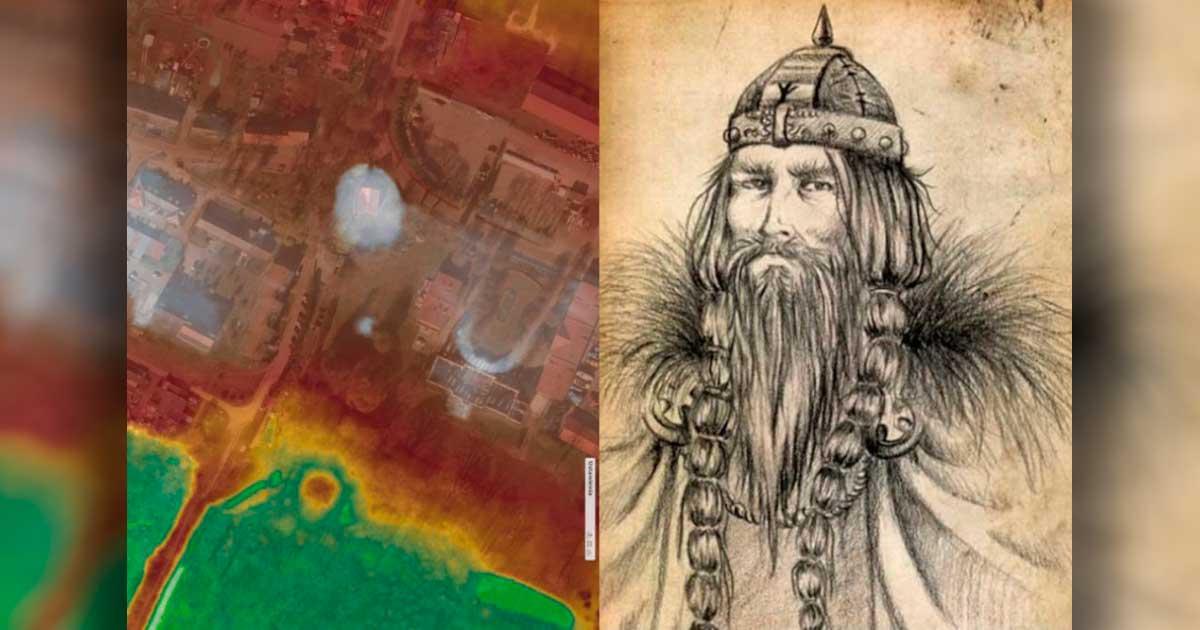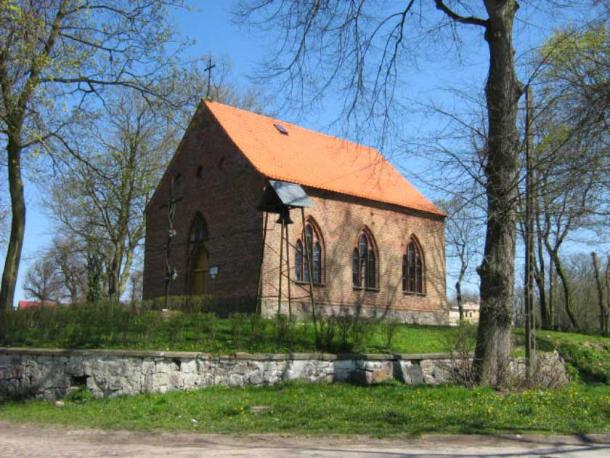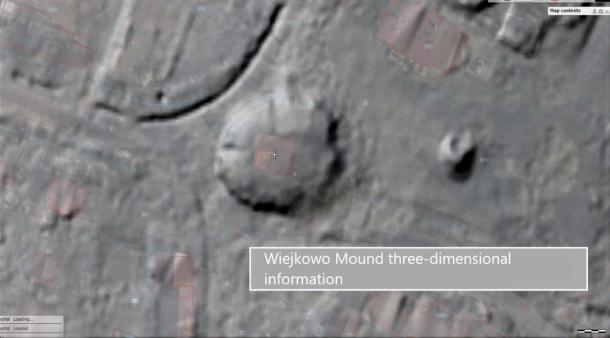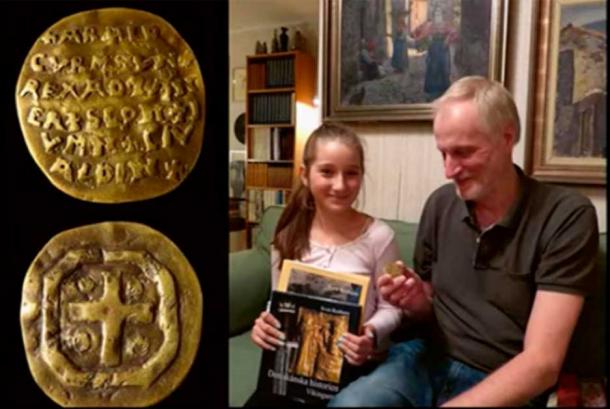
Harald Bluetooth’s “Probable” Burial Mound Scanned By Satellites
The lost tomb of the 10th century Viking King, Harald Bluetooth, has “probably” been identified “again.”
When Old King Gorm died around 935 AD, the new Viking ruler of Denmark and Norway became Harald Gormsson Bluetooth. While much is known about Harald’s life, until this last decade his place of rest was unknown. But now researchers say satellites have revealed that the famous king “might” lie buried, with his one rotten tooth, in a mound outside a small Polish village.
A team of remote sensing researchers claim to have solved “one of history’s most enduring mysteries.” They believe they have identified the long-lost burial mound of the legendary Viking king, whose name is used today to describe ‘Bluetooth’ wireless technology. The huge mound was discovered near the village of Wiejkowo in the administrative district of Gmina Wolin, within Kamień County, West Pomeranian Voivodeship, in north-western Poland.

The church atop the mount suspected to be the Harald Bluetooth burial mound. (Radosław Drożdżewski / CC BY 3.0 )
The Mystery Mound Of Wiejkowo
Marek Kryda is the author of the best-selling book Viking Poland and is serving as the Lead researcher on the satellite scanning project in Poland. The researcher told TFN that the “possible” burial site of the Danish king was, until now, one of history’s most enduring mysteries. The team applied a suite of satellite remote sensing tools on the huge mound in Wiejkowo and concluded that it was indeed built for the 10th century king of Denmark and Norway, Harald Gormsson Bluetooth.
- Bluetooth Treasure: Metal Detector Dings on Silver of the Danish King in Germany
- 1,000-Year-Old Chamber Burial on Polish Island Reveals Rare Treasures

This is the satellite image of Wiejkowo, Poland, that the researchers believe reveals the burial of Harald Gormsson Bluetooth. (Marek Kryda / The First News)
Only in May I wrote an Ancient Origins article about a young girl living in Malmö, who in 2014 handed her teacher a small golden disc that was brought to Sweden by her Polish grandmother. The so-called Curmsun Disc was discovered with other Viking artifacts beneath an old church on the outskirts of the village of Wiejkowo. A Latin inscription mentions the Viking king as being ‘ruler of Danes, Scania and the Viking fortress of Jomsborg’, which is today the town of Wolin, only 3.5 miles west of the Wiejkowo burial mound.
“Possibly” A King’s Wedding Gift
The disc, along with rest of the Viking hoard had been left in a crypt beneath the church until 1945 when Stefan Sielski, a Polish army major, seized it. The disc was subsequently kept in a box of buttons until 2014 when Sielski’s 11-year-old great-granddaughter dug it out, took it to school and showed it to her history teacher.
Karen Schousboe, Danish anthropologist and Editor-in-Chief at Medieval Histories, concluded that the Curmsun Disc was “possibly” a wedding gift during Harald Bluetooth's second marriage.

Screenshot showing Maja Sielski with archaeologist Sven Rosborn. (Curmsun Disc / YouTube)
These are the clues that the mound upon which the Wiejkowo church sits is the burial mound of Harald Bluetooth. But more than this is needed to reach solid conclusions.
Marek Kryda told The First News that “space-based reconnaissance” allowed the team to scan areas of land as small “as 30.5 centimeters (12 inches) long.” But even though Kydra is convinced this is the Viking king’s grave, it is still being called the “possible burial mound” of Harald Bluetooth, who united the Scandinavian countries through introducing Christianity to the pagan north.
While the research team are convinced this is the burial mound of King Bluetooth, and the scans add more weight to the theory, it is debated as to whether the king was ever interred at this site. And many archaeologists don’t think the site has anything to do with him.
The Problematic “Probable”
Kryda says this new satellite research “fully confirmed the existence of a large Wiejkowo Mound.” This statement is a fact. But he also said, “at the same time this confirmed that Wiejkowo is the burial site of Bluetooth.” This statement, however, is a total assumption, and it absolutely has not been “confirmed” that this is the legendary Christian king’s burial site. Confirming this, would take nothing less than a skeleton, or at the very least a bone holding DNA.
However, it should be said, after this stiff dose of skepticism, the fact that a church was built on top of the Viking mound suggests it was indeed a very sacred pre-Christian site, most “probably” fit for a king. But the only way to settle this debate, once and for all, will be after the application of Ground-Penetrating Radar, which will provide high resolution imagery from within the mound. Or, of course, one day they might even dig it up.
Top image: Left, Image of the church at Wiejkowo, the proposed site of the Harold Bluetooth burial. Right; Harald Bluetooth sketch representation. Source: Left; Marek Kryda, Right; Public Domain / The First News
By Ashley Cowie















